Korean Art History Midterm
1/30
There's no tags or description
Looks like no tags are added yet.
Name | Mastery | Learn | Test | Matching | Spaced |
|---|
No study sessions yet.
31 Terms
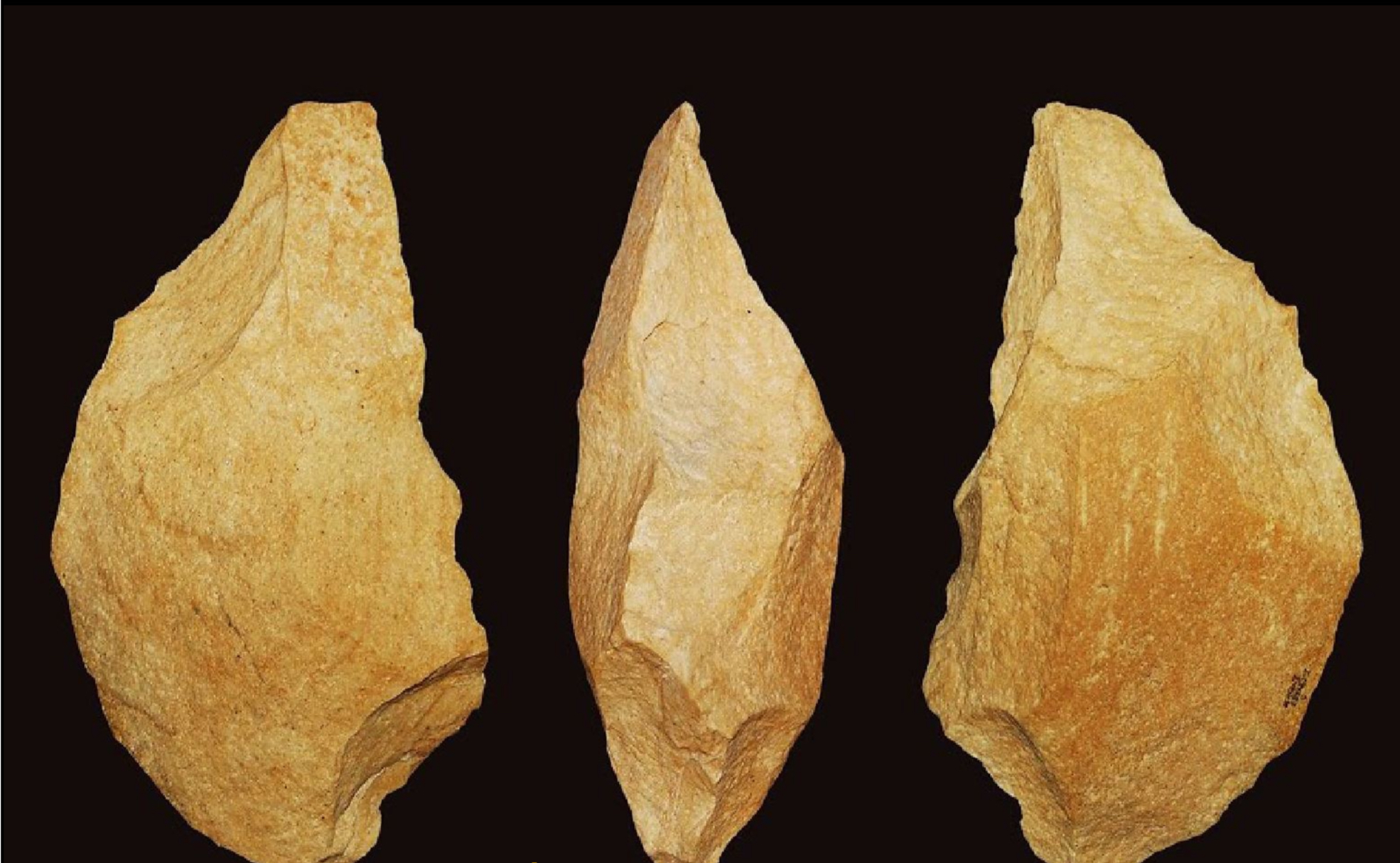
Handaxe.
jeongok-ri, yeoncheon-gun, Gyeonggi Province.
Paleolithic Period
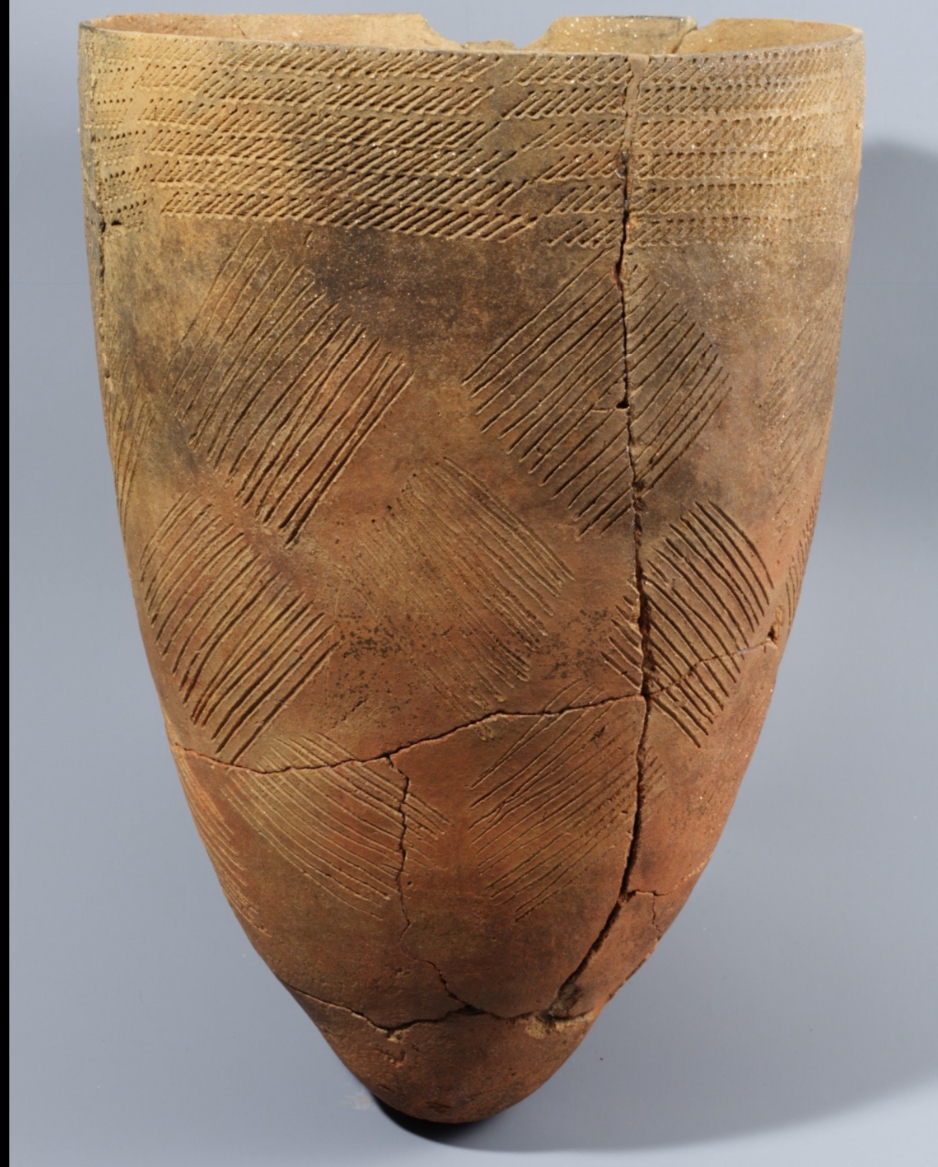
Comb-pattern Pottery. (bitsalmuni togi)
Amsa-dong, Seoul. 5000 BCE ~6000-3000 BCE
Neolithic Period
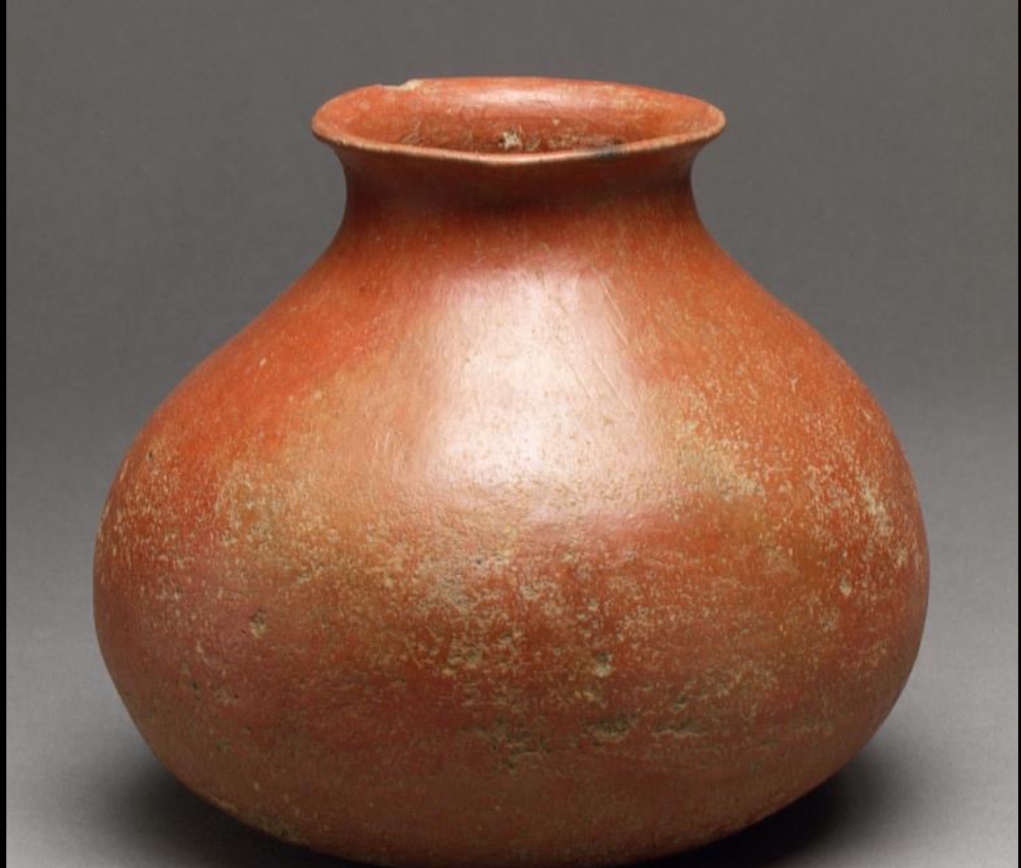
Red Burnished Jar.
Bronze Age. 1000-300 BCE. Iron-oxide and fire caused red color.
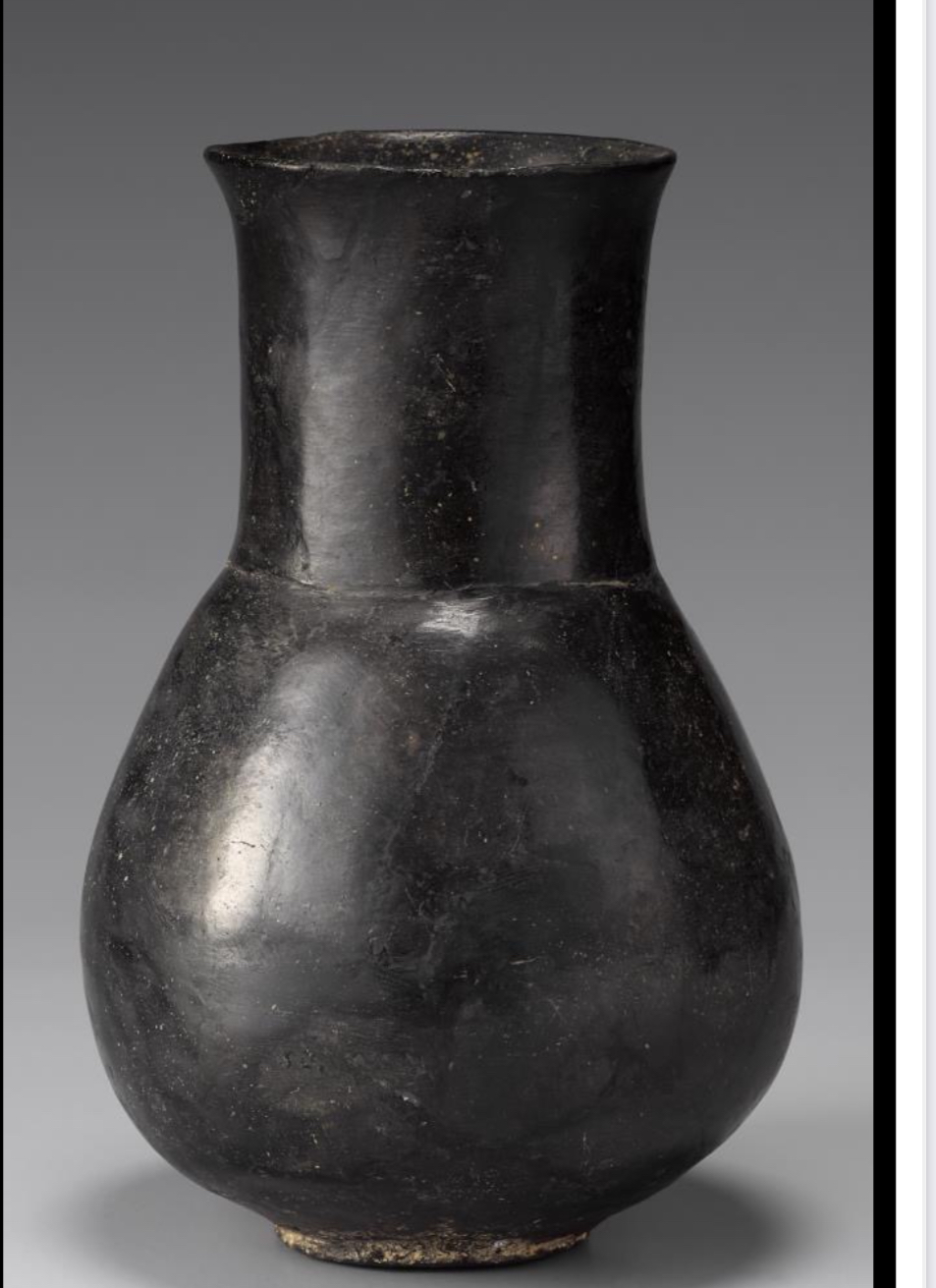
Black-Burnished Jar.
Daejeon, Late Bronze Age, into Iron Age.
Black iron ores or powdered dung + fire caused black glossy finish
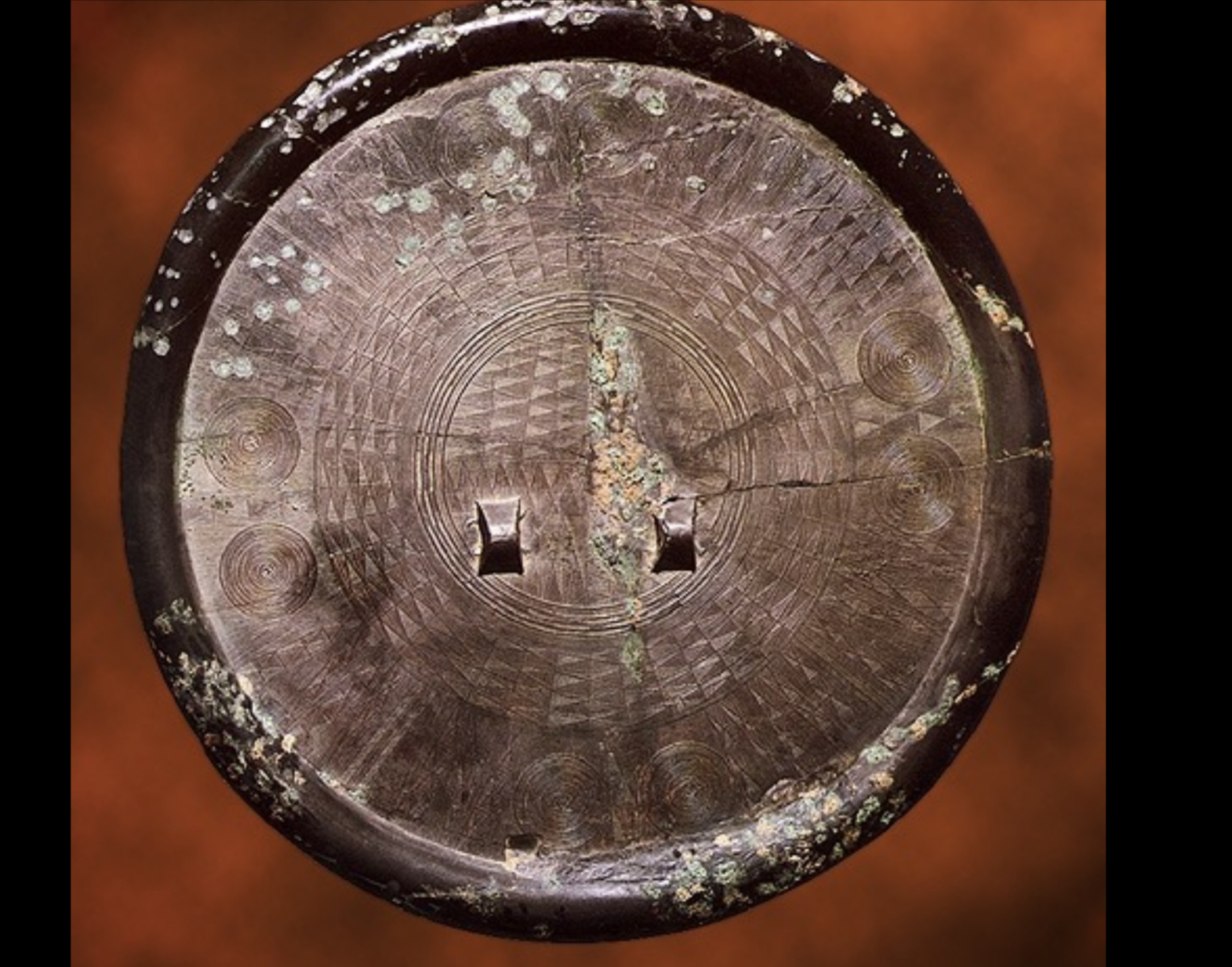
Bronze Mirror.
Bronze Age. 1000-300 BCE.
Asan-si, South Chungcheong.
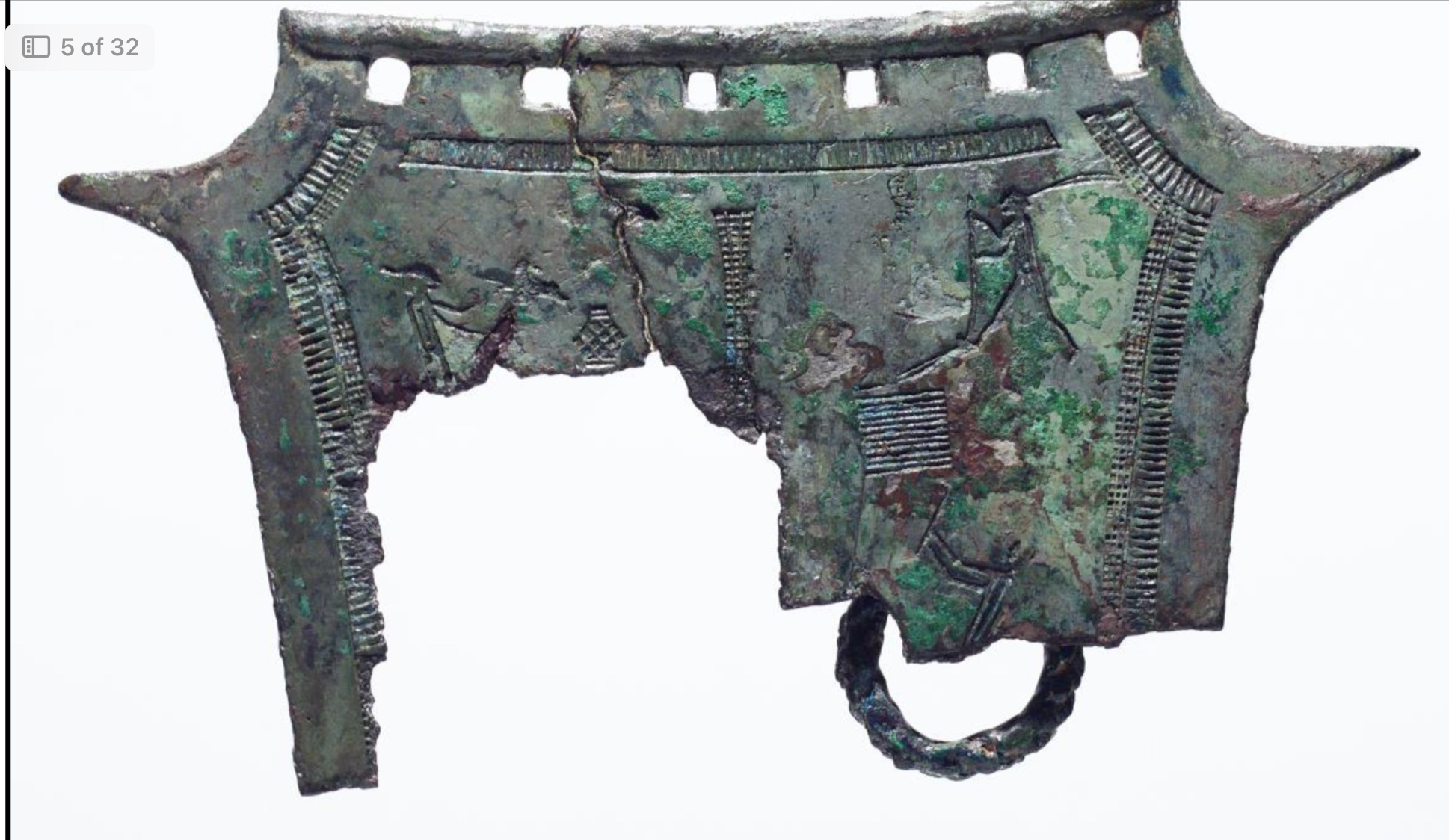
Bronze Ritual Artifact.
Bronze Age, Daejeon, South Chungcheong. Has detailed engravings of 3 figures farming/plowing and riding a bird. Birds signified peace and protection.
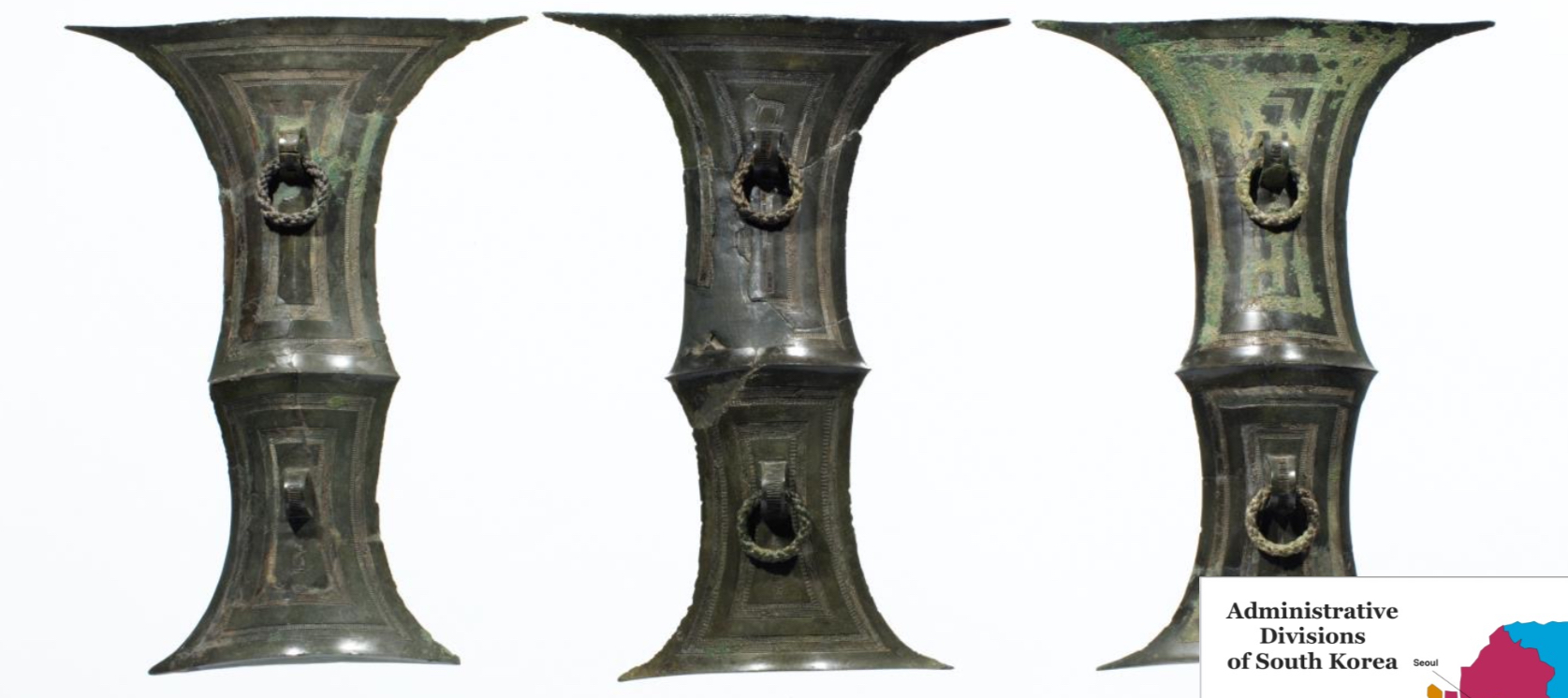
Bronze Split Bamboo-Shaped Artifact (hilt)
Bronze Age, Asan-si, South Chungcheong. Appears to be a dagger hilt but hollow in the back like split bamboo. has a deer motif → symbol of shamanism from siberia and evidence of theocratic society
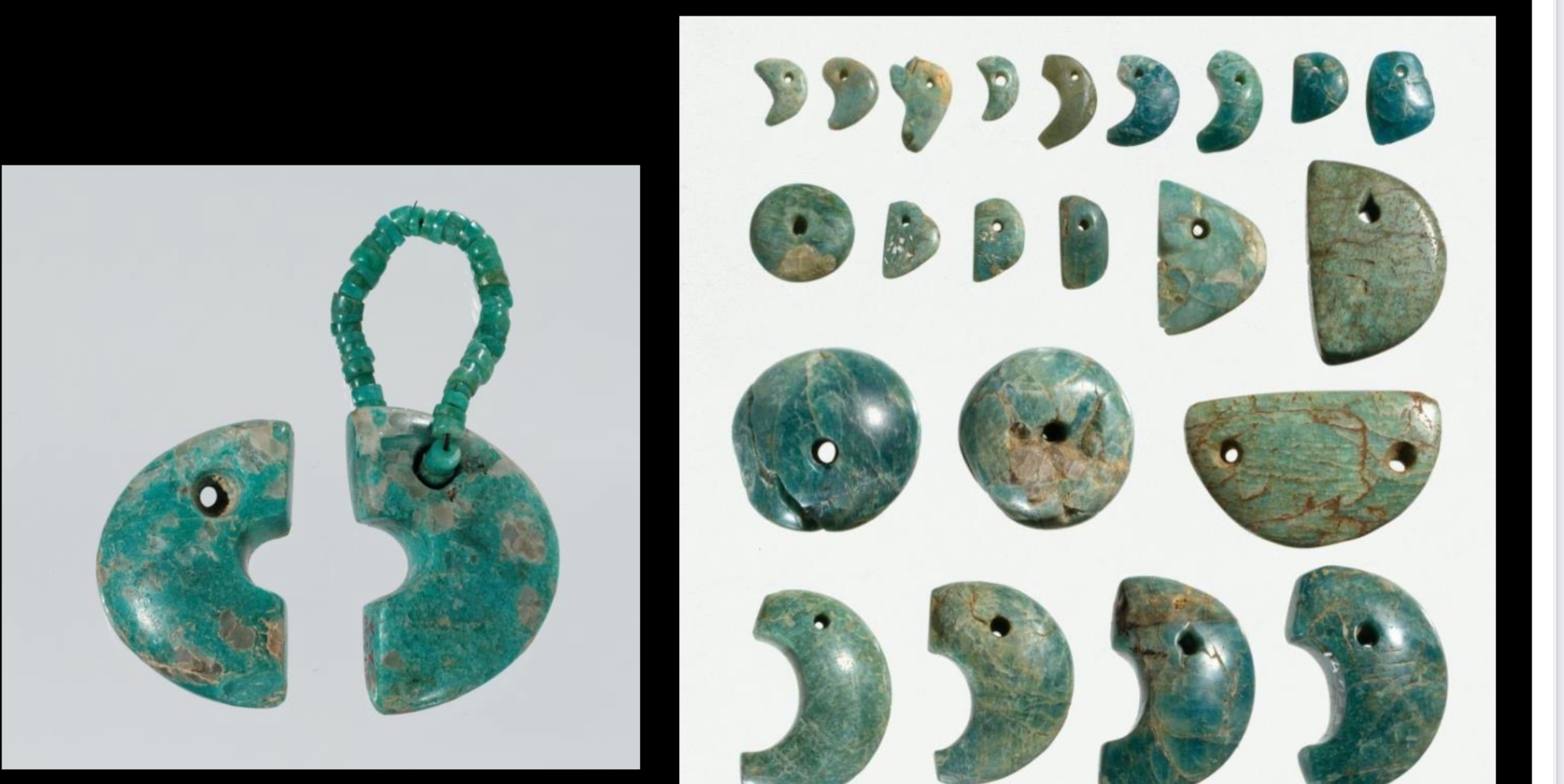
Comma-Shaped jades (Gogok)
Found in Siberia and Northeast Asia (providing evidence for Scytho-Siberian influence)
In Korea: from Bronze age to 6th century (especially in Silla kingdom)
Magatama in Japan
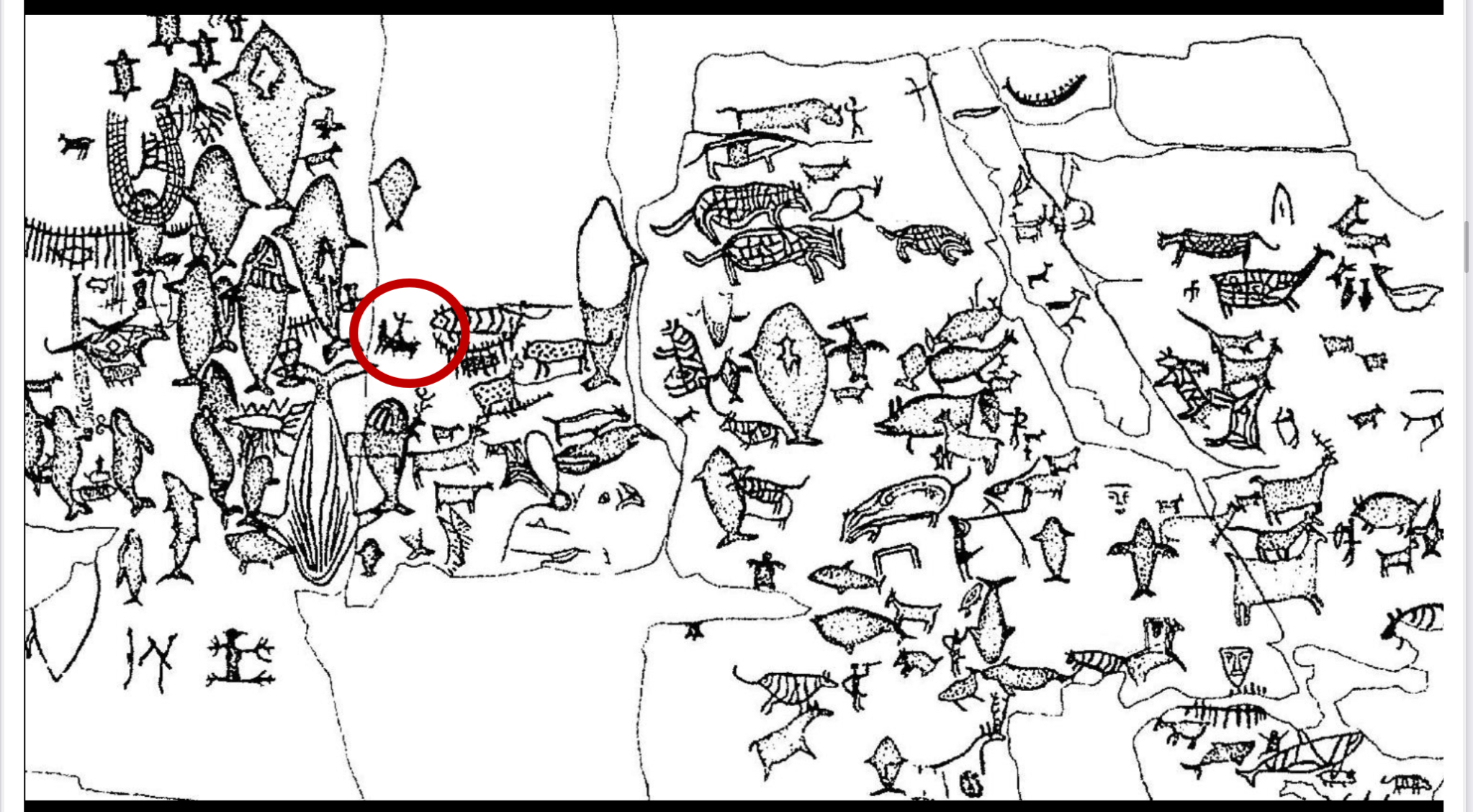
Bangudae Petroglyphs.
Late Neolithic-early Bronze age
Ulju-gun, South Gyeongsang Province. has fish motifs, turtles, whales, deer (siberian influence), boars, and hunting depictions
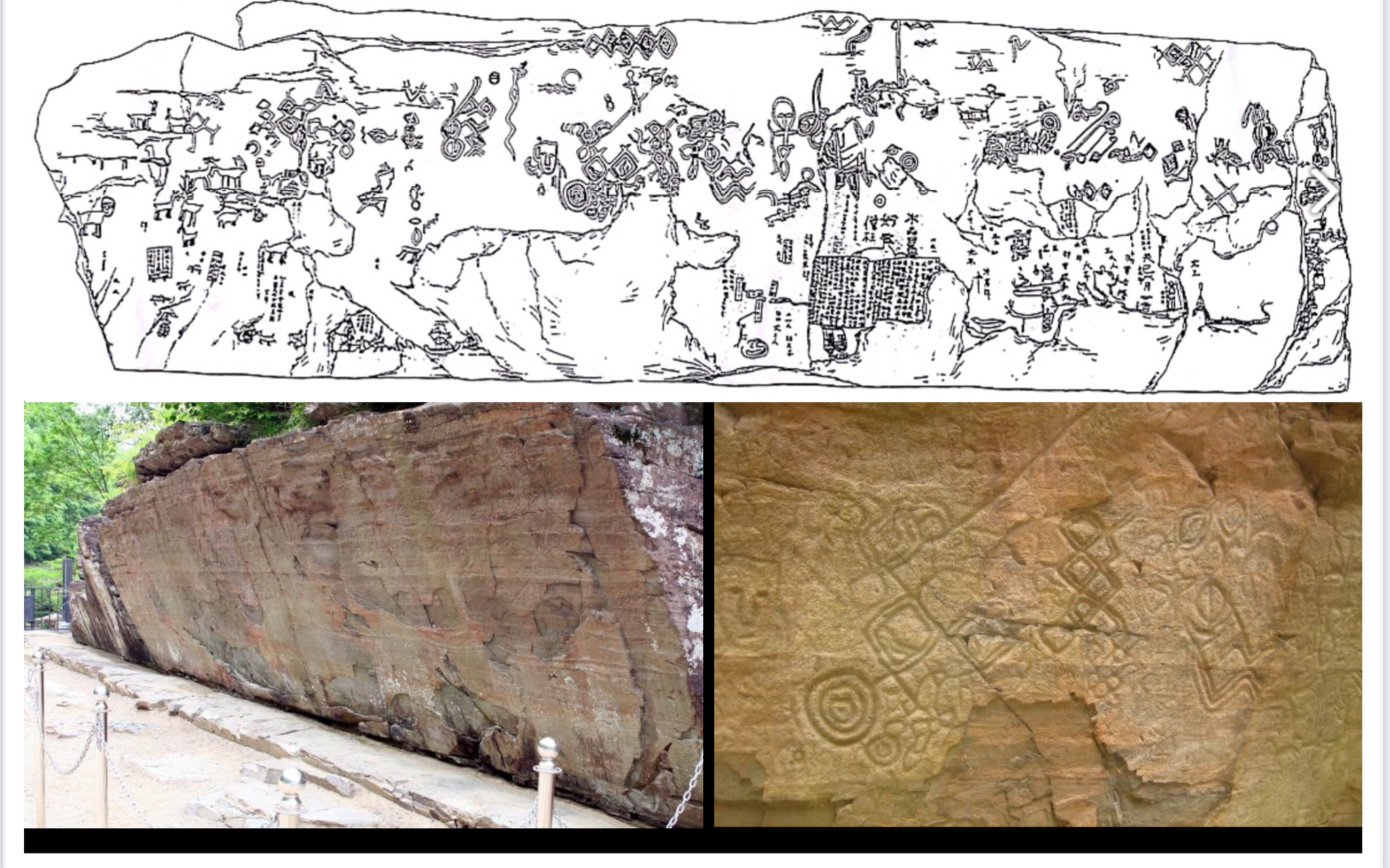
Cheonjeon-ri Petroglyphs.
Bronze Age, Pohang, North Gyeongsang Province. More design-like patterns, usually on limestone that relfect a shamanistic worldview
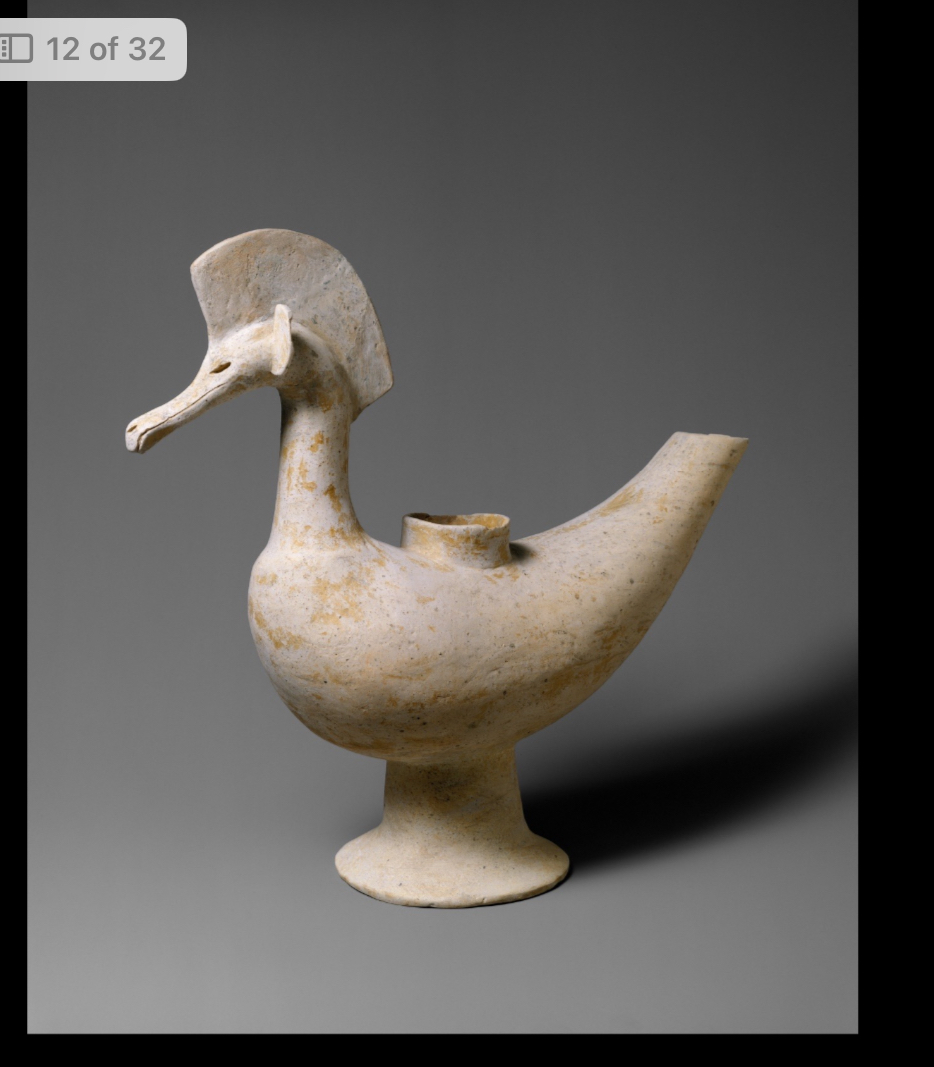
Bird-shaped Vessel.
Proto-Three Kingdoms, late 2nd-3rd century CE.
Appearance of sculptural objects, bird shaped vessel associated with funerary ceremony, birds as vehicle carrying souls to the land of immortals or intermediaries btwn heaven and earth. Vessel for wine.
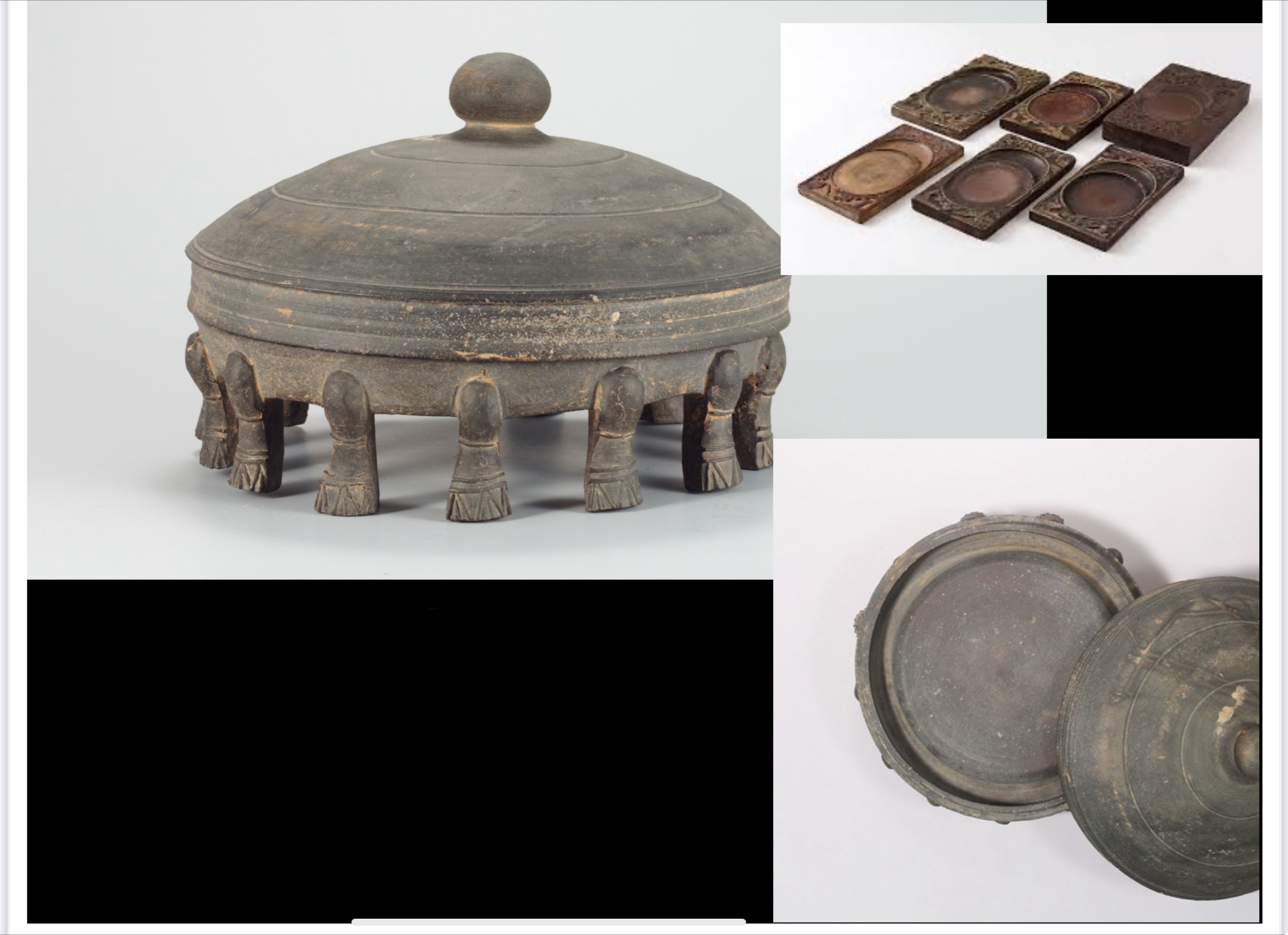
Kyongjil Pottery Inkstone.
Stoneware.
Baekje, 6th-7th century. Mongchon Earthen Fortification. But water in it, grate it, creates monocrome ink. round shape inkstones originate from China.
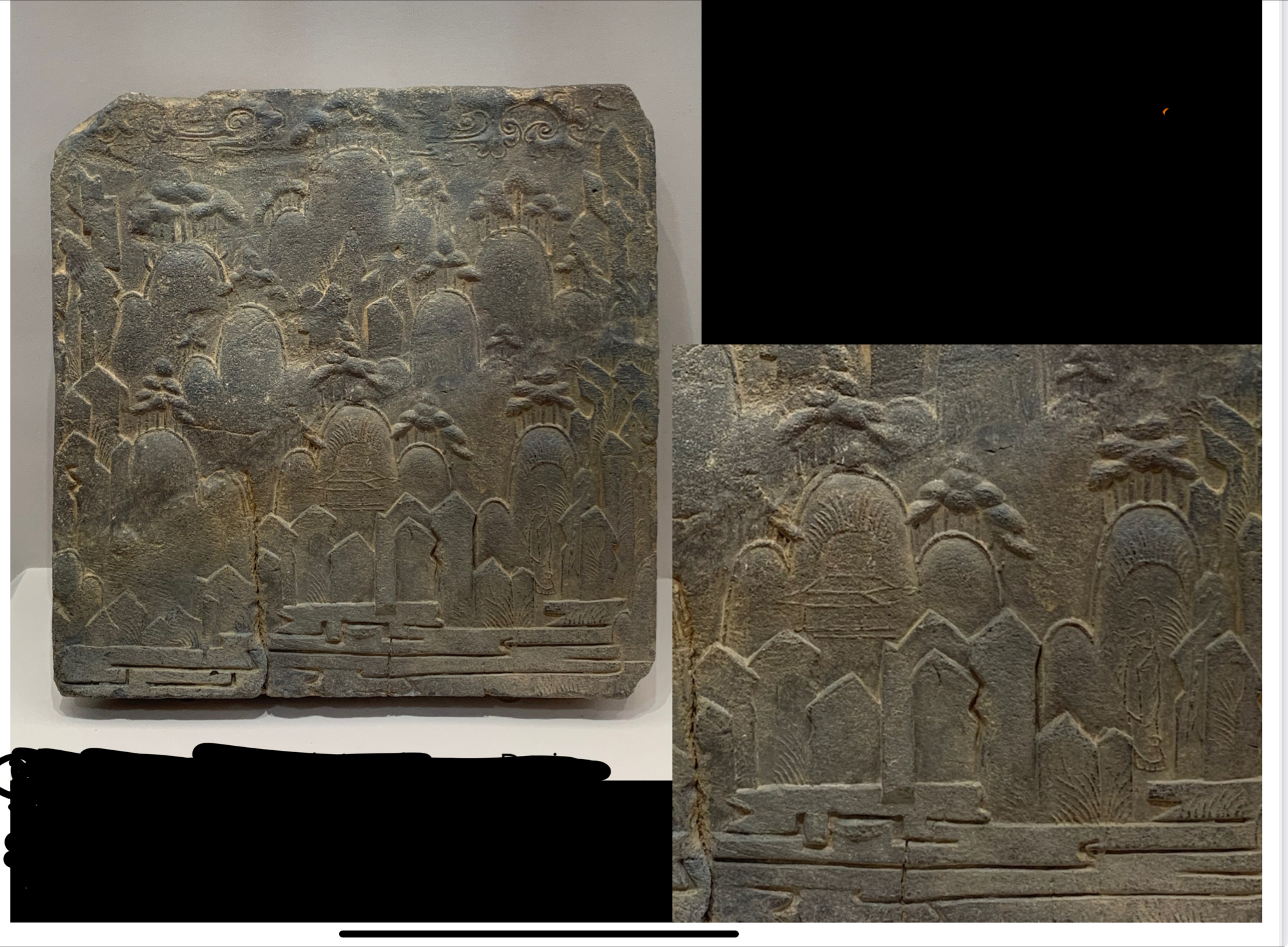
Earthenware Tile with Landscape Design.
Baekje, 7th century. Buyeo, Chungcheong.
First molded, then fired. Representation of Mt. Peng-lai: legend mountain in Daoist mythology that represents ideal dwelling place

Great Gilt-bronze Incense Burner.
Baekje, 6th-7th century, Buyeo, Chungcheong.
Phoenix traditionally related to Daoism. Phoenix is cardinal direction SOUTH.

Crown. Hwangnam Tomb 98.
Three Kingdoms period, Silla Kingdom, 5th century CE. The great tomb at Hwangnam, Gyeongju.
Gold and Jade.
3 tree-like vertical forms: axis mudi linking earthly and heavenly realms. Shamans moved between them via trees.
2 antler-like prongs: antlers associated with reindeer which is the fertility of the earth in Siberia.
Comma-shaped jade: gogok symbolizing ripe fruits hanging from branches (fertility).
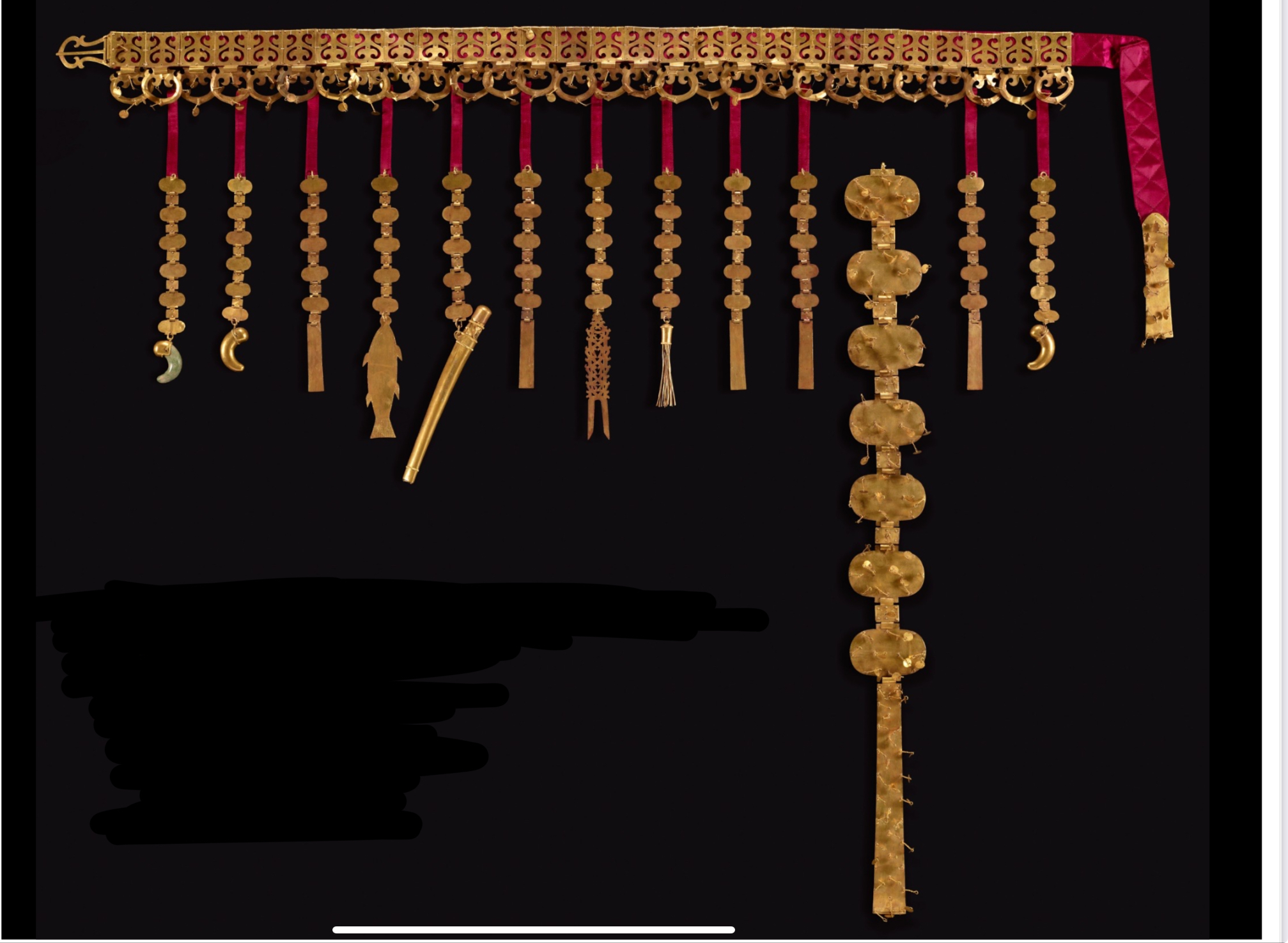
Gold Wait Belt from the North Mound of Hwangnamdaechong Tomb.
Silla, 5th century.
Related to siberian culture due to origin in northern nomadic tradition.
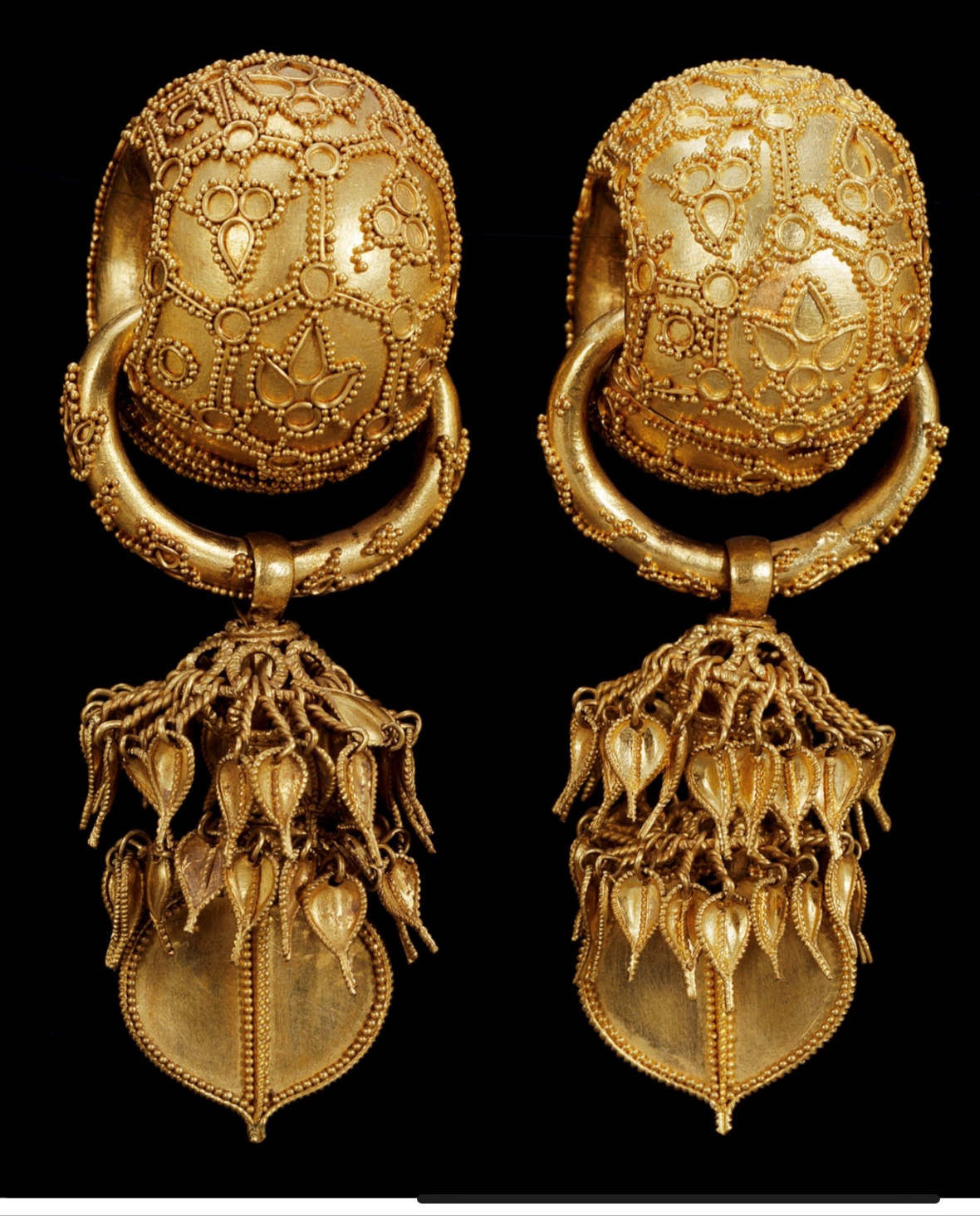
Gold Earrings from Bubuchong Tomb.
Silla, 6th century, Gyeongju, Gyeongsang.
uses technique called granulation where tiny grains of gold are attached to the surface. High level metal work that fuses granules to the surface using light flame.

Large Jar with Applied Figures.
Silla, 5th-6th century.
Attached figures of frogs, turtles, snakes, birds. represents food chain and fertility Human figurines dance and play instruments.
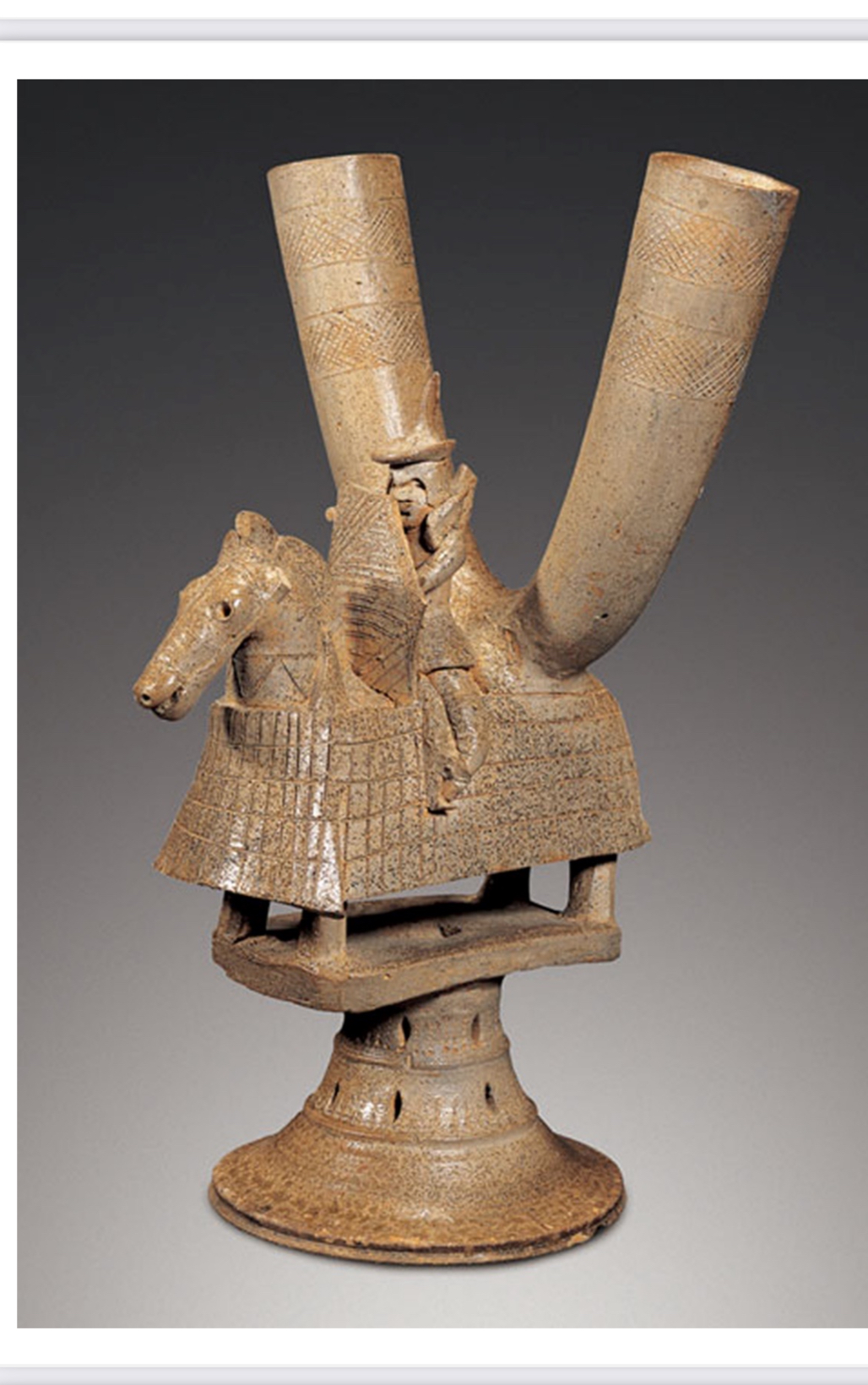
Vessel in the shape of a mounted warrior.
Gaya Kingdom, 5th-6th Century. Gimhae, Geyongsang.
Scale armor using leather strings. has horned shaped cup which comes from central Asia. Used as ritual vessel.

Anak Tomb, Dong Shou Yonghe Portrait.
Goguryeo, 357. On the west wall of the west chamber.
Deceased master wearing Baekna (white silk crown) with black inner headdress and holds a zhuwei fan in his right hand.
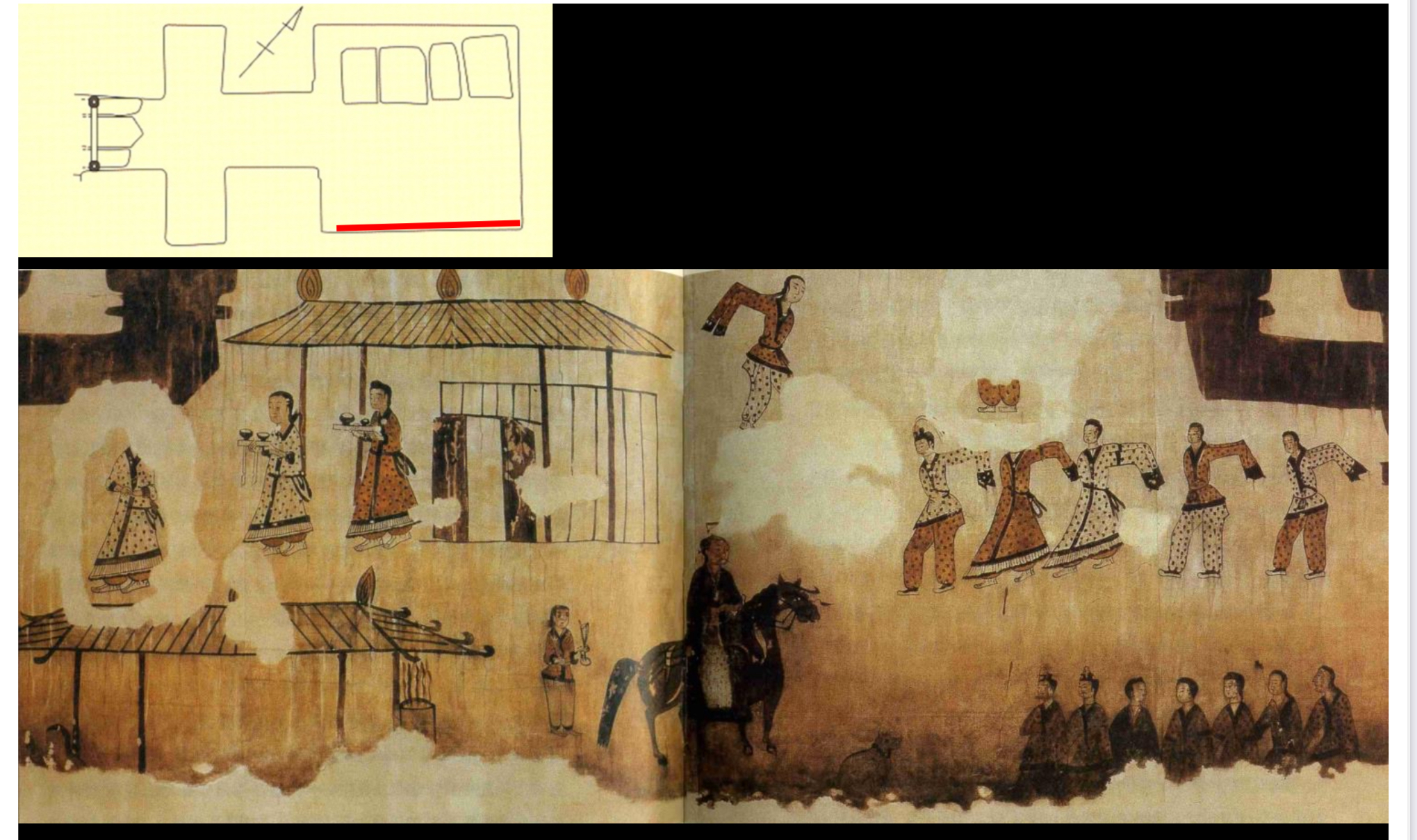
Dancing Scene, main chamber.
Muyeon-chong (dancing tomb) mid 5th century. Ji’an in China. Second phase of tombs (5th-6th century)
Artist doesn’t know how to arrange based on spacial distance, so things further away are at the top of the painting.
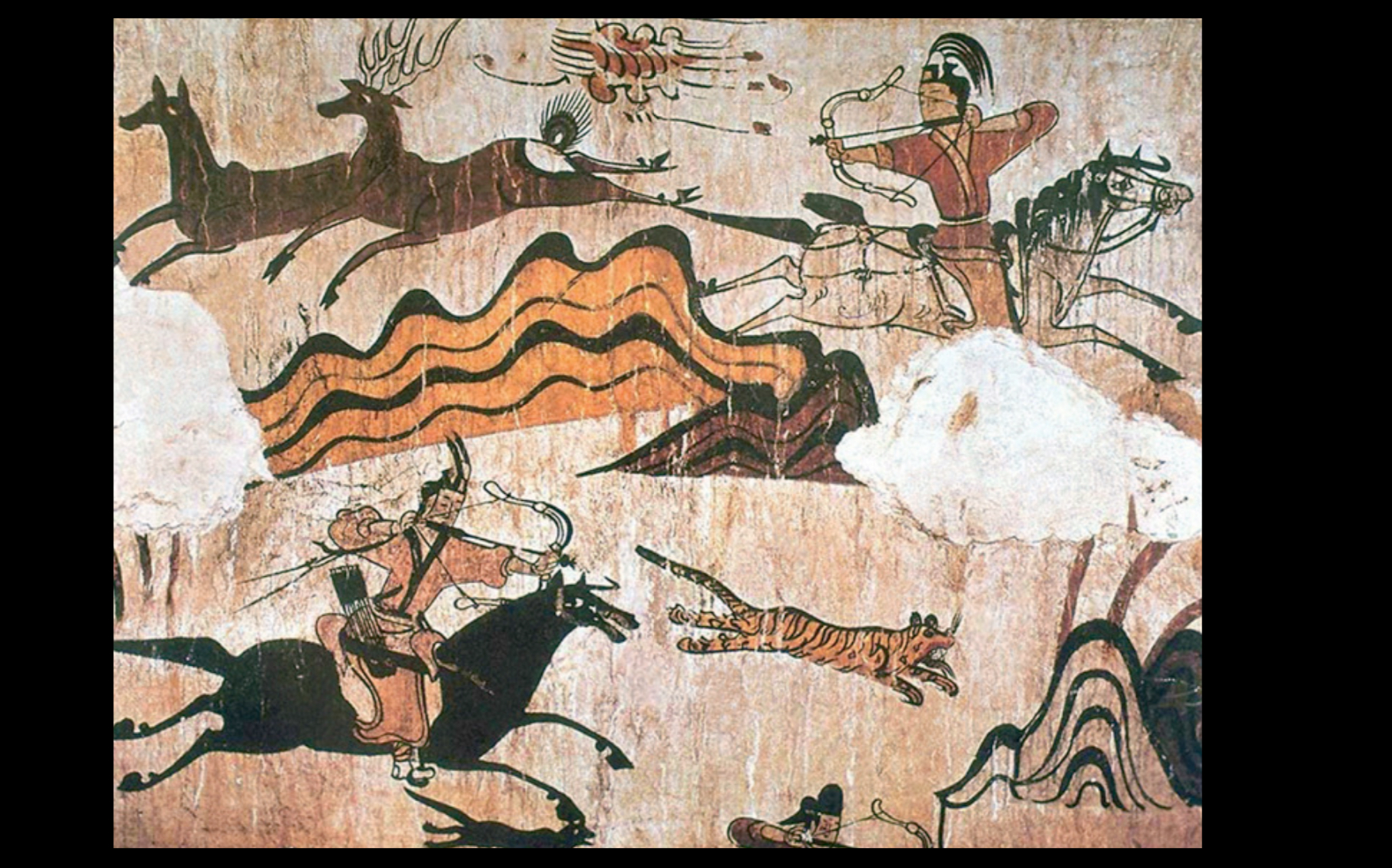
Hunting Scene.
Three kingdoms period, goguryeo kingdom mid 5th century. West wall painting. Muyongchong Tomb.
Parthian shot. Hunters on horseback shooting backwards. Shows culture interaction because the images are not native to Korea, but from Parthian empire.
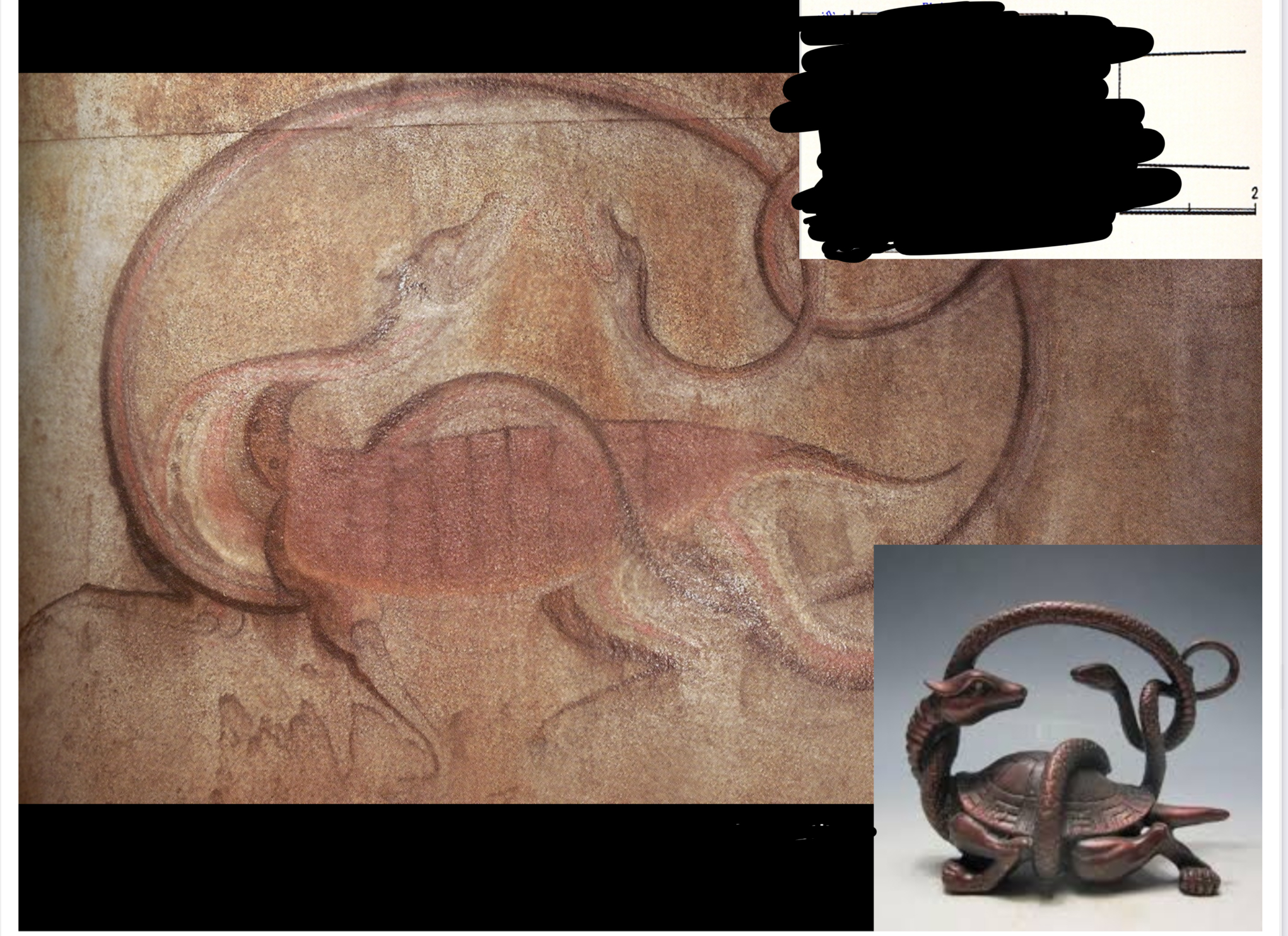
Black Warrior, north wall.
Ganseo Daemyo Tomb, Goguryeo(pyeongyang) kingdom 6-7th century.
Black turtle wrapped in a snake. Represents NORTH.
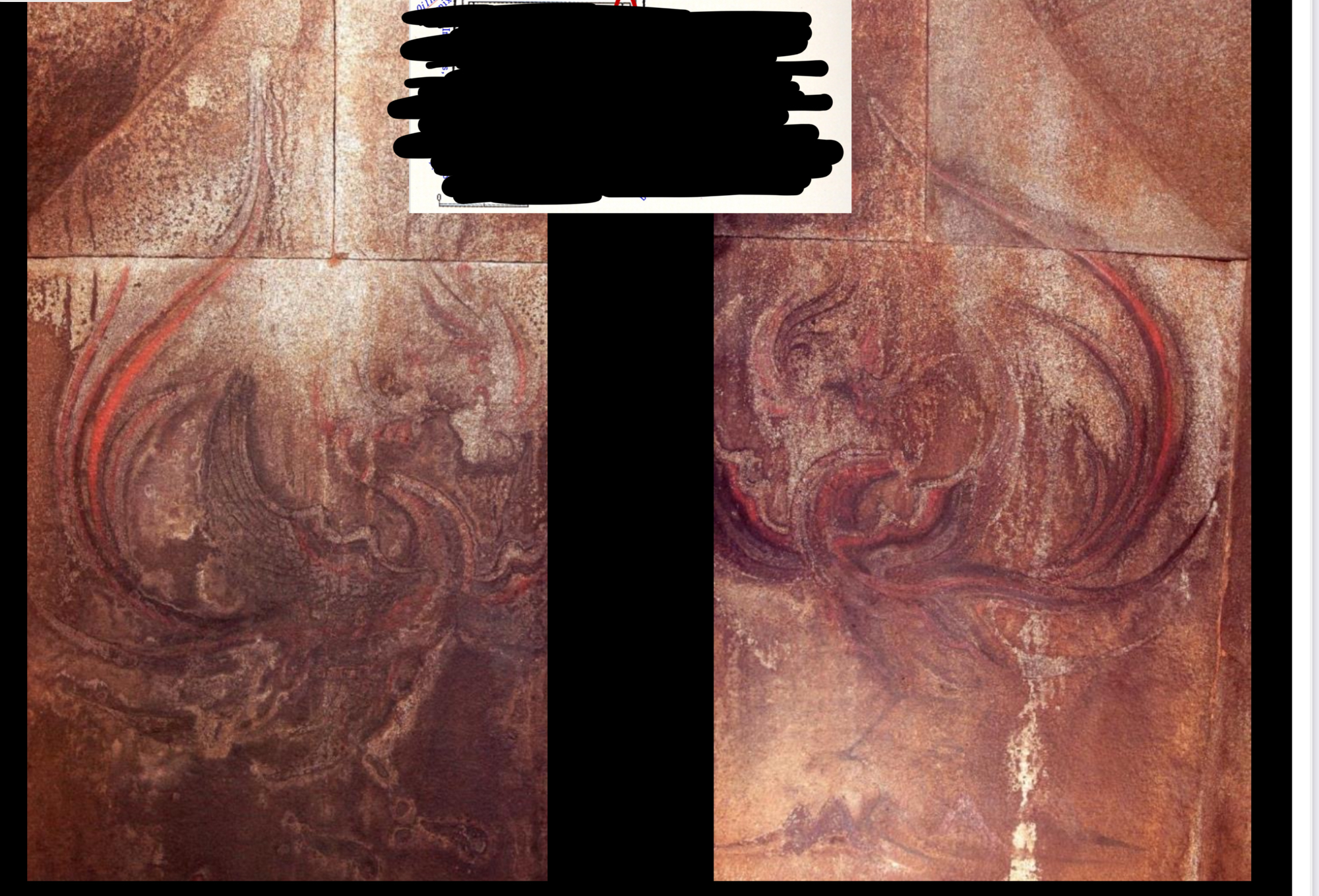
Red Phoenix, south wall.
Ganseo Daemyo Tomb, Three kingdoms period, Goguryeo (Pyeongyang) Kingdom 6-7th century.
Two phoenixes are facing each other, very elegant representation with flowy lines indicating painting skills improved and developed significantly. Represents SOUTH.
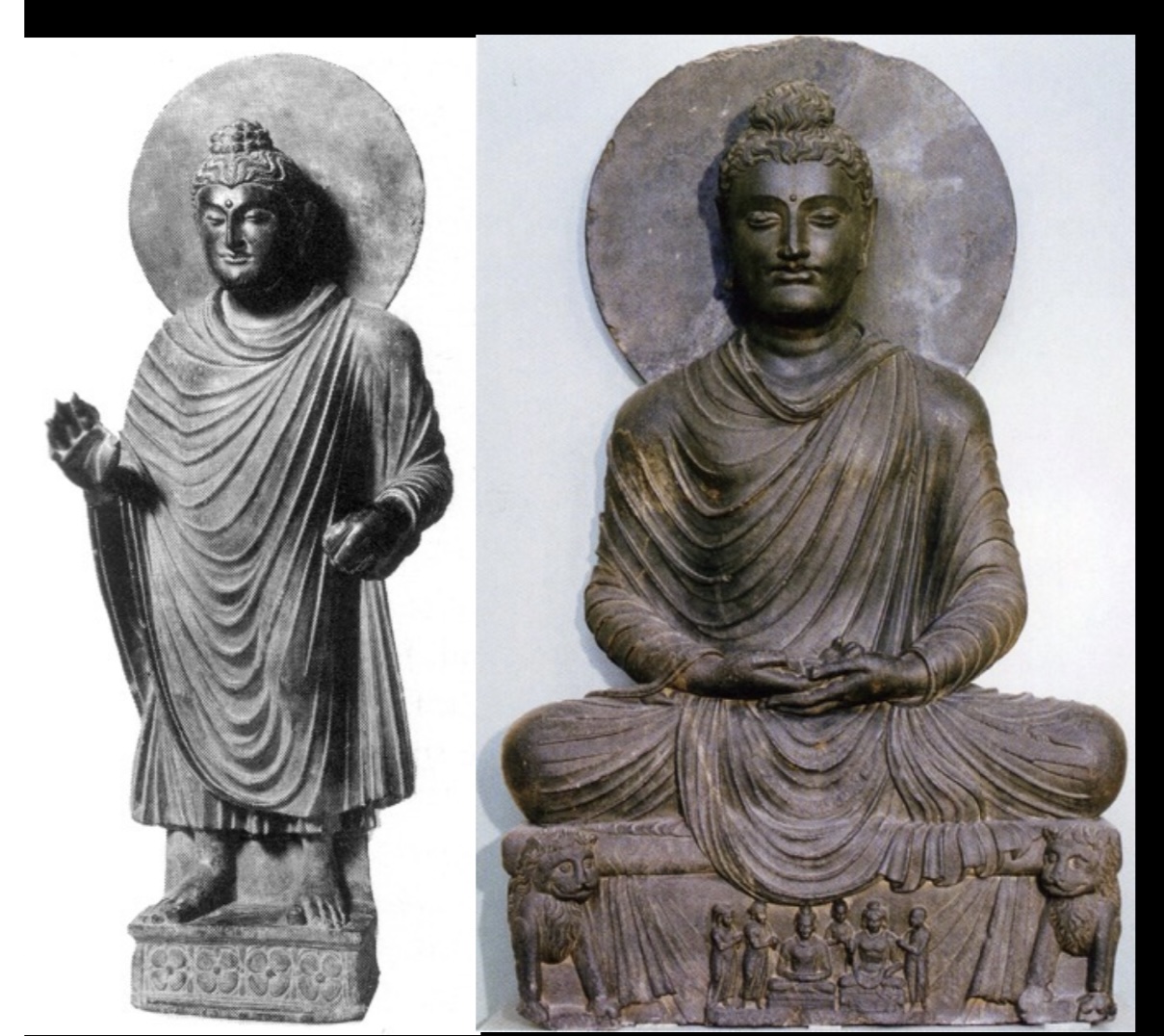
Gandhara Style Buddhist Art.
2-3rd century CE. Kushan Dynasty, India.
Influence of Greco-Roman style. Gray schist.
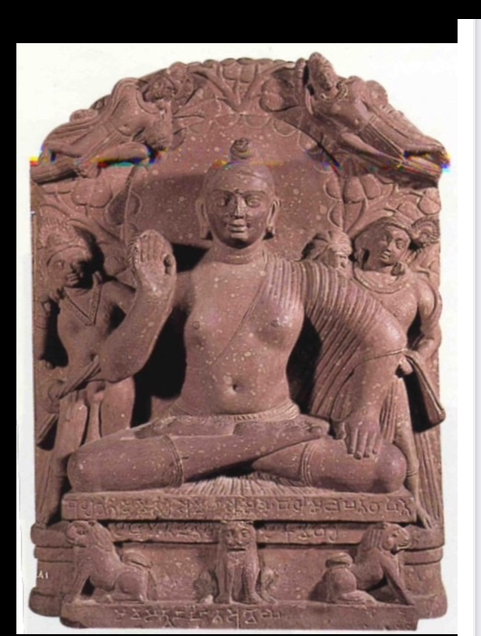
Mathura Style Buddhist Art.
1st century CE. Kushan Dynasty, India.
“South Asian” style. Red sandstone.
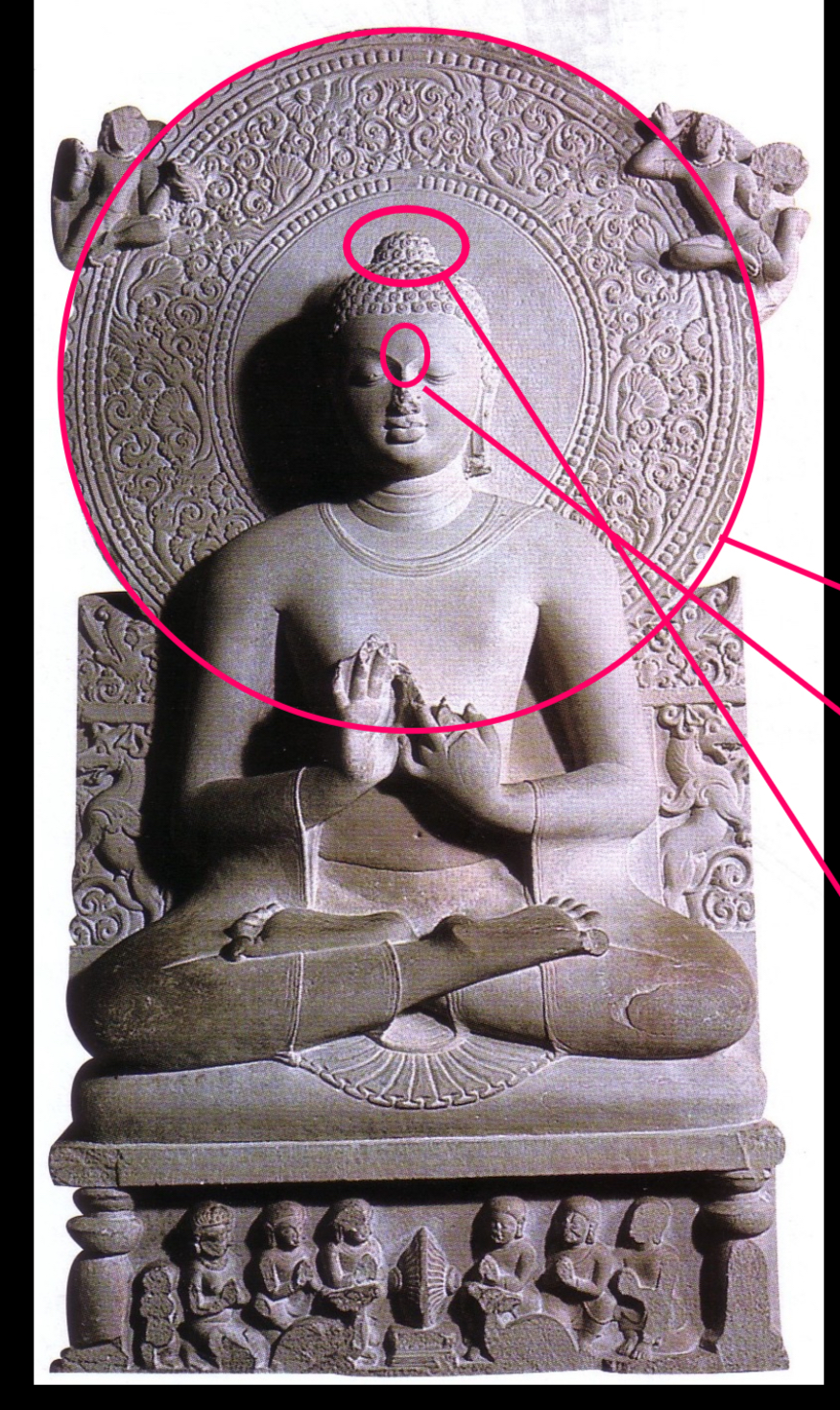
Preaching the First Sermon at Sarnath Tan Sandstone.
4th century CE, Gupta period.
Seated in yoga posture, turning the wheel of the law mudra. Image of Buddha was idealized and codified.
HALO: signified Buddha’s radiance
URNA: third eye on forhead indicating wisdom
Ushnisha: bony protuberance on his head stands for his widsom
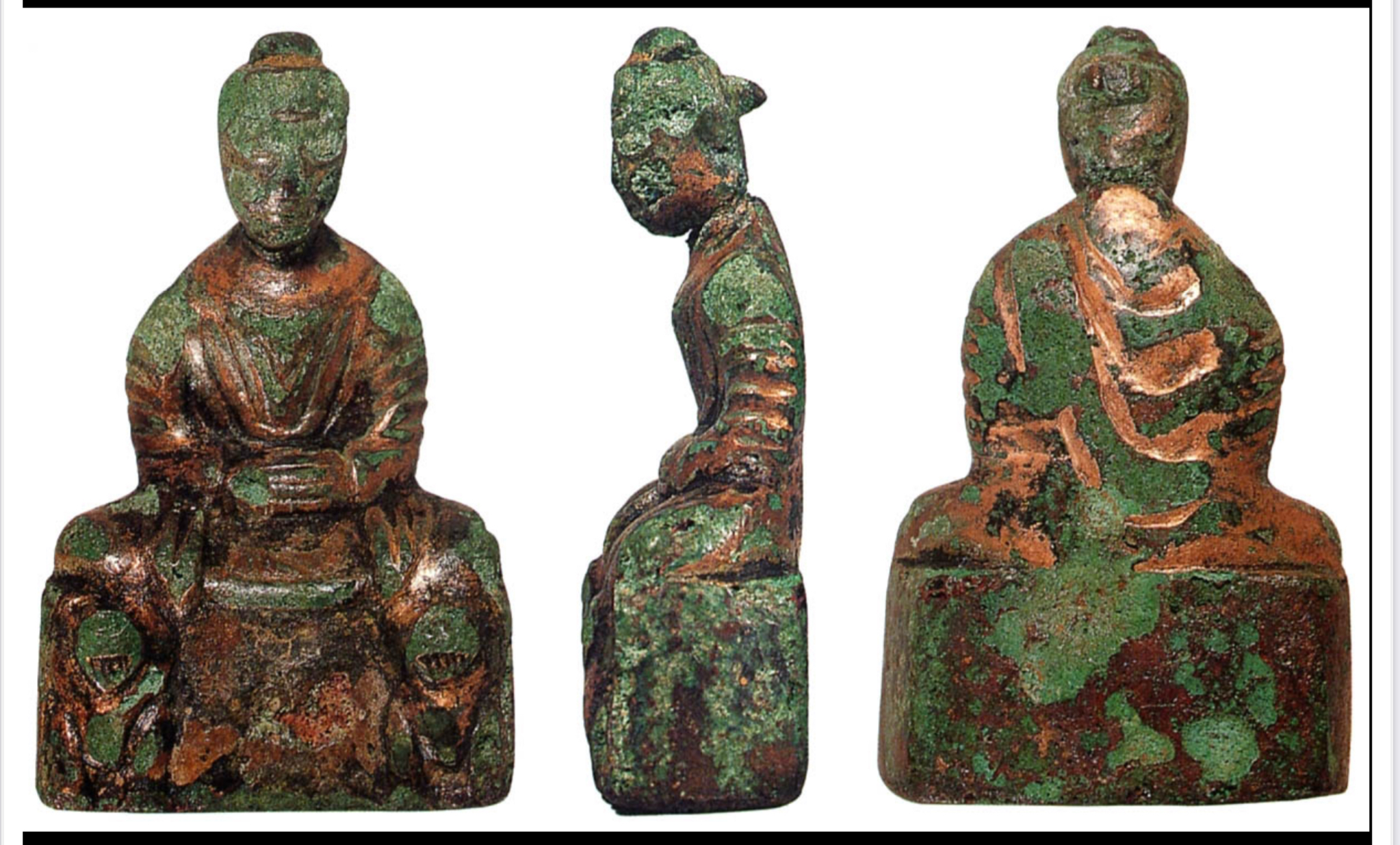
Seated Buddha
Goguryeo or Baekje. 5th century. Ttuksom, Seoul.
First Buddha statue found in Korea. Unsure of whether it came from bc found in baekje but more similar to northern dynasty in China which indicates Goguryeo
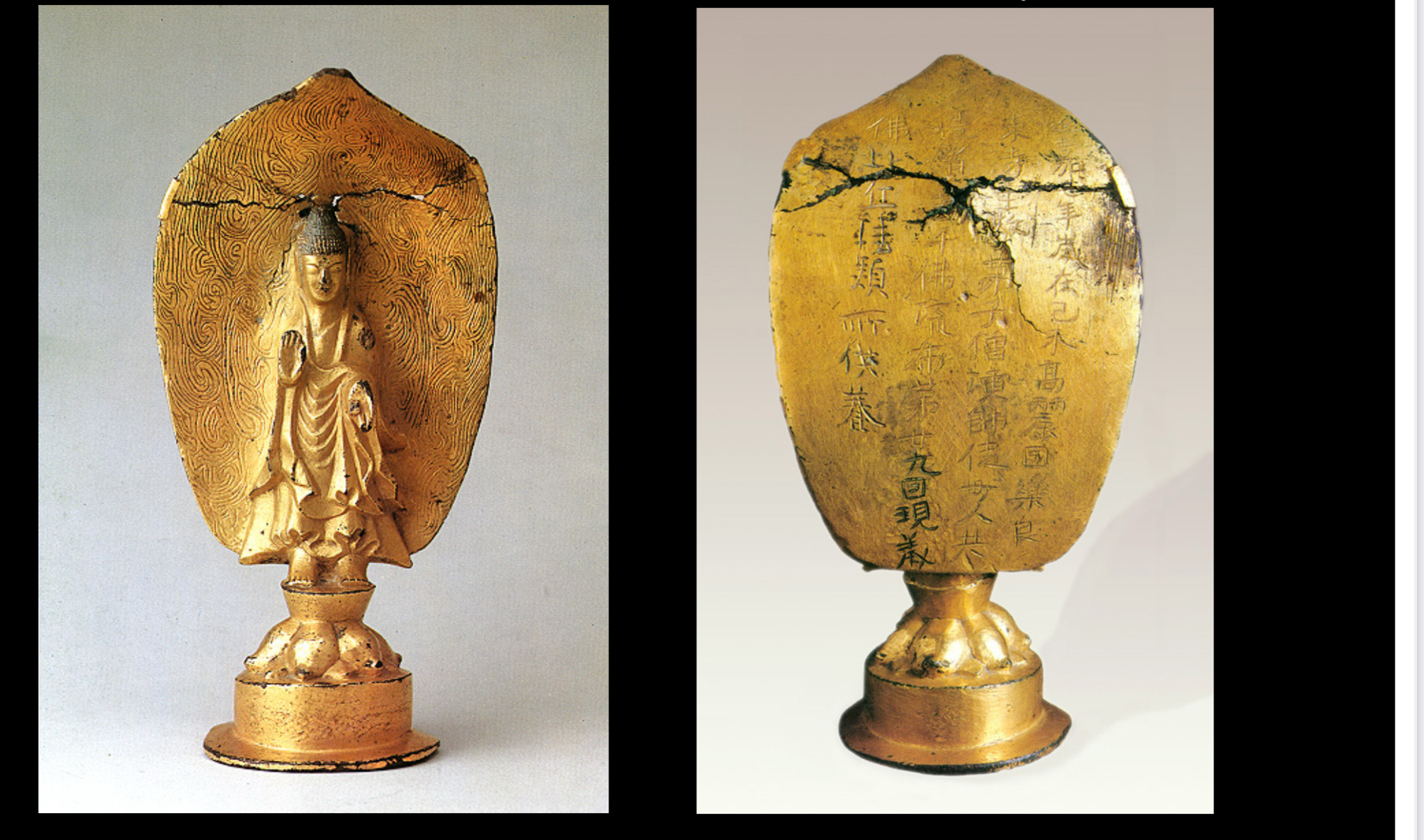
Standing Buddha
Three kingdoms period, Goguryeo kingdom dated 539. South Kyongsang province written on back, Gilt bronze.
Face is elongated and covered in thick drapery. Made in east temple in the capital of goguryeo.
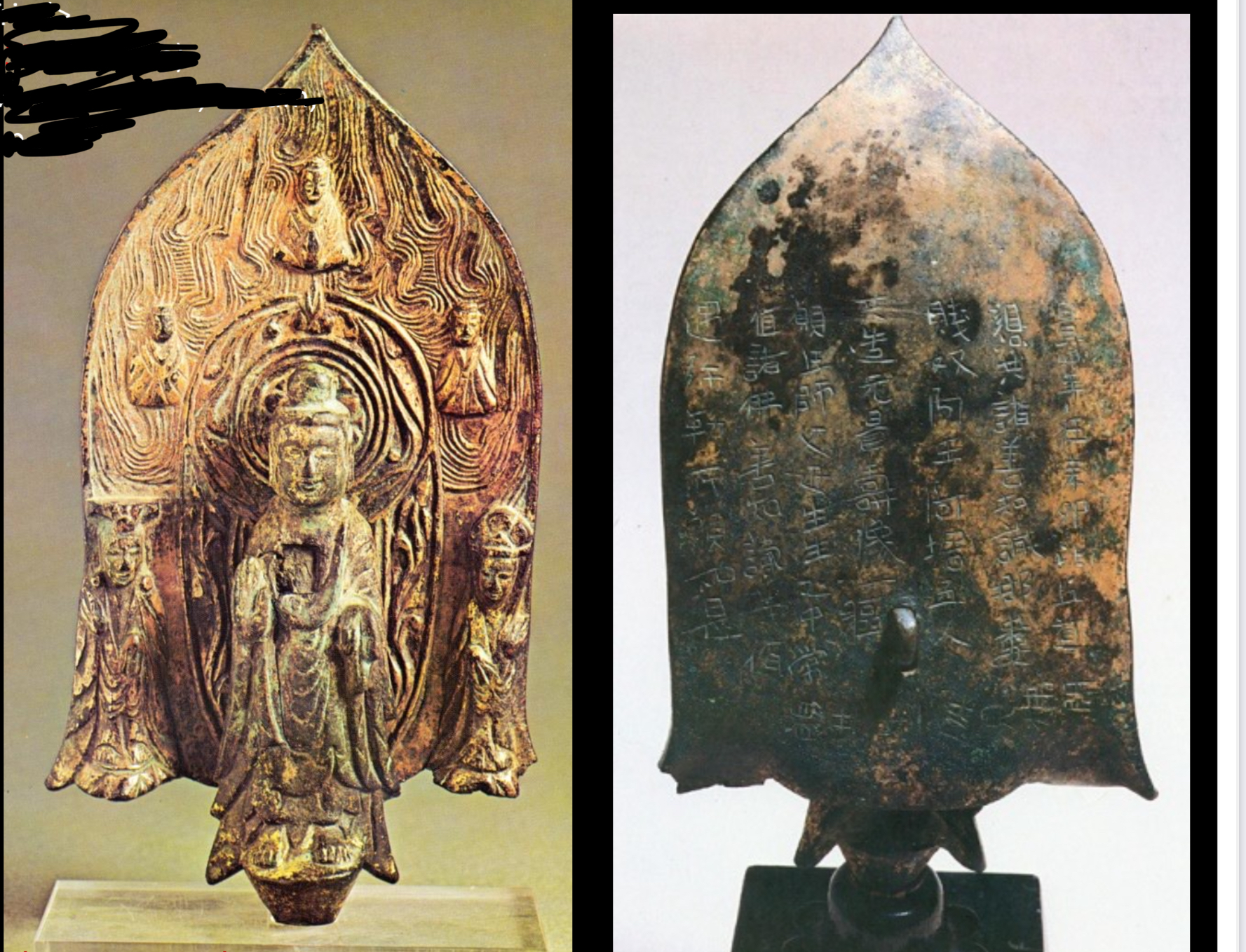
Buddha Triad.
Goguryeo, 571. Found in Koksan.
Buddha’s face is bigger and buddha’s body is clearly expressed with clothing cascading down like a waterfall which indicates Buddha. Has two attendants Mahasthamaprapta and Avalokiteshvara.

Seated Buddha.
Baekje, late 6th century, from Buyeo the second half of the 6th century.
Soapstone. Folds of his garments cover a rectangular base. The “Baekje smile” is a unique feature of Baekje buddhas → warm smiling expression with plump face and friendly charm.